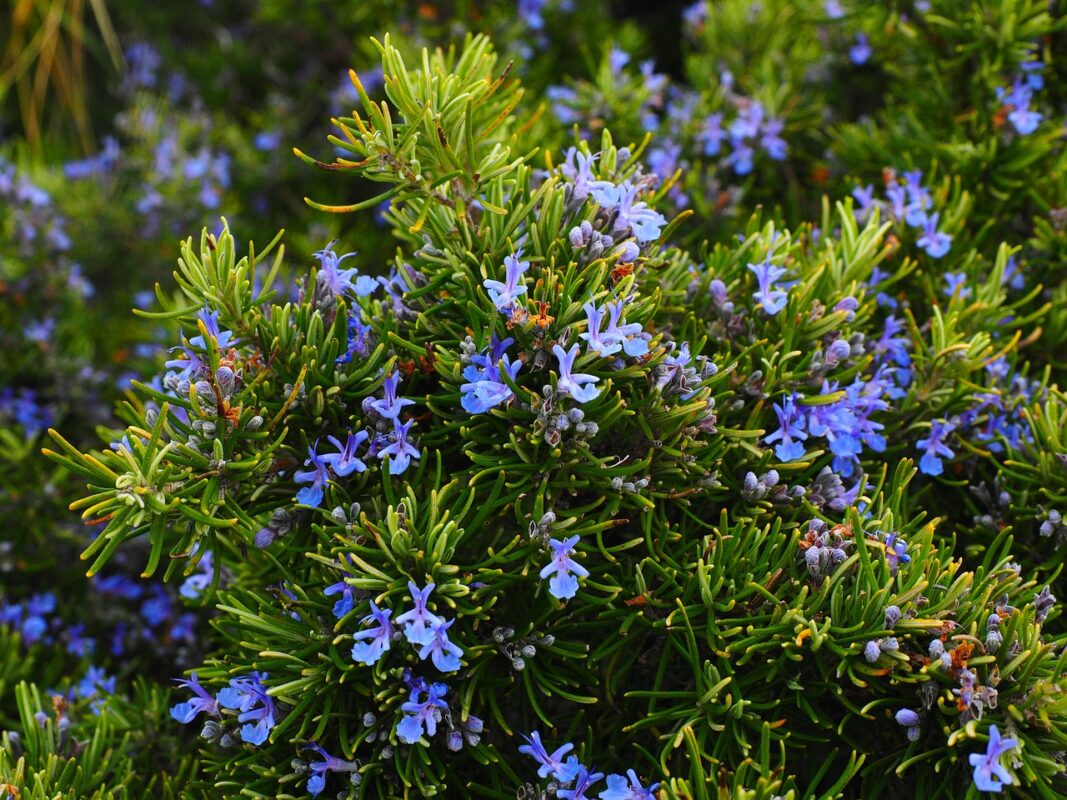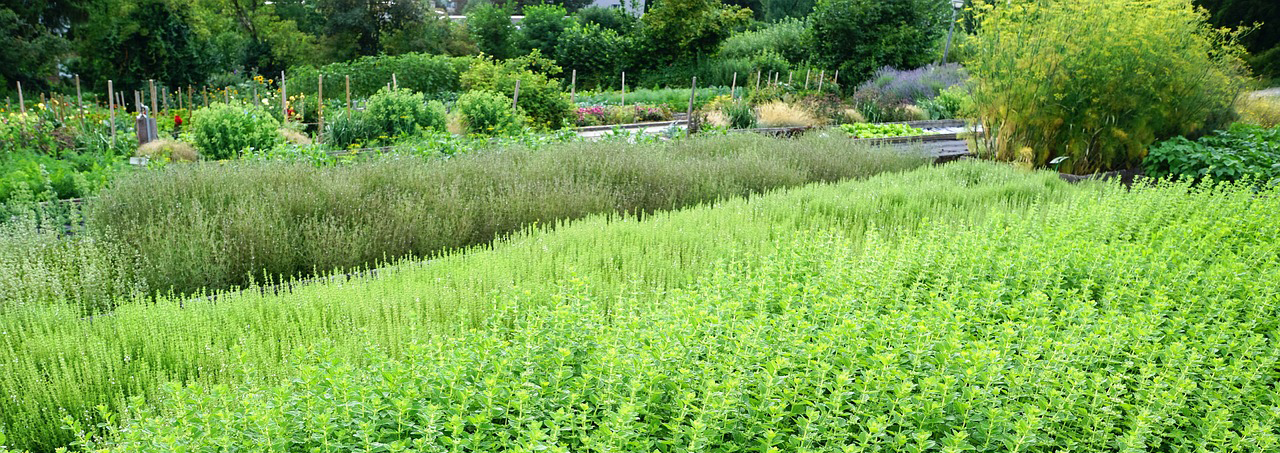IDENTIFICATION
Scientific name:
Rosmarinus officinalis / Salvia rosmarinum
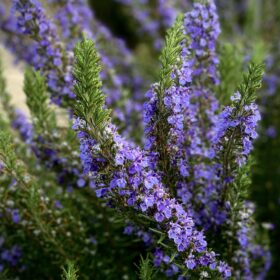
Italian common name:
Rosmarino, Osmarino, Usmarino, Smarino
Family:
Lamiaceae
Origin:
Mediterranean basin: areas of Europe, Africa and Asia bordering the Mediterranean.
Environment:
It is spontaneous in the Mediterranean bush. It grows in the altitude range between 0 and 1000 meters above sea level. Sunny and dry, rocky and stony places, close to the sea, even in urban and suburban environments due to its ability to grow in the interstices of walls and between cracks.
Evergreen or deciduous:
evergreen
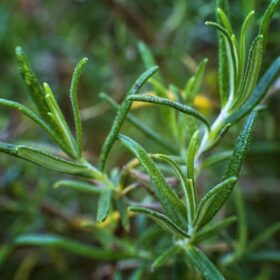
Toxicity:
In large doses, Rosmarinum officinalis is toxic, especially to pregnant women. The use of rosemary is not recommended when you are taking specific medications because it could reduce their effects. Avoid it if you suffer from epilepsy, it can also irritate the intestines and lead to vomiting.
PLANT RECOGNITION
Height:
50 cm – 150 cm
Width (extension):
120 cm
Habit:
woody plant with bushy habit
Leaf:
persistent and leathery, similar to needles, 2-3 cm long and 1-3 mm wide, opposite, linear-lanceolate, crowded numerous on the twigs.
Shiny dark green color on the upper side and whitish on the lower side due to the presence of white fuzz which makes the plant appear grey.
They have slightly curved edges and are very fragrant.
Flower:
The flowers have an irregular shape. The calyx is made up of five sepals, joined together to form a sort of tiny bell. It is persistent and enlarged when the fruit is ripe. The color varies from light blue, pale blue, blue-violet and more rarely white or pink. The flowers are gathered in clusters in the leaf axils.
Flowering: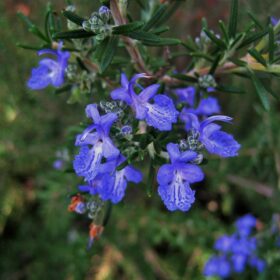
March – October and, if in particularly sheltered positions, even for longer.
Fruit:
The fruit is enclosed in the calyx, shaped like a grain of rice, light brown in colour, with a cream-coloured insertion surface, oblong and smooth, brownish in colour.
Stem:
Light brown woody stems, prostrate ascending or erect, much branched; the young gray-green hairy branches have a quadrangular section.
Property:
The plant and its constituents, including carnosic acid, rosmarinic acid and carnosol, have anti-inflammatory, antioxidant, anti-mutagenic, antibacterial, antiviral and neuroprotective activities. To learn more about the topic go to erbecedario
An essential oil is obtained from the plant, used above all in skin-purifying, deodorant and toning creams and products. Also very useful for greasy and weak hair and to soothe arthro-muscular pain. It is also used in mouthwashes for oral hygiene.
Parfume: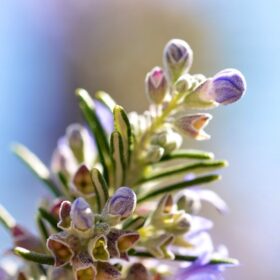
intense aromatic
NEED
Maintenance:
It does not require special care as it is a very rustic species.
Light Exposure:
full sun, possibly sheltered from cold winds.
Soil type:
light, sandy-peaty, well-drained calcareous-siliceous soils, with neutral and fertile pH.
Soil acidity:
pH 6,5 – 7,0
Italian climatic area:
It is native to the Mediterranean area where it grows in the coastal areas along all the Tyrrhenian and Ionian coasts of the Italian peninsula, on the Adriatic coasts up to Molise, on all the islands and also on the western banks of Garda. It is cultivated in almost all of Italy although it cannot tolerate prolonged harsh climates.
Need for water: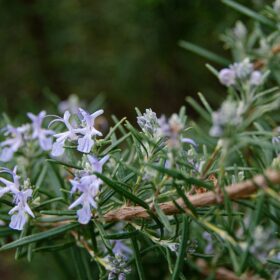
does not require frequent watering
Propagation:
apical cutting of the new shoots in spring taken from the basal shoots and the most vigorous plants and planted for at least 2/3 of their length in a mixture of peat and sand;
sow in April-May, transplanting the seedling in September or the following spring;
division of the plant in spring.
Pruning:
The best time to prune is spring at the time of vegetative awakening. You must not cut too deeply, there is the risk of cutting on so-called “dead” wood that does not produce new branches. Prune in spring after the first wave of growth.
Diseases:
Powdery mildew (powdery mildew), alternariosis, root rot, anthracnose (Ascochyta rosmarini). Rosemary lacewing, Chrysolina Americana, Cacoecimorpha pronubana, Hubner, aphids.
To learn more click on noisiamoagricoltura
PARTICULARITY 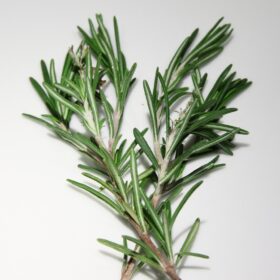
There are multiple versions of the reason for the name. It is more likely – according to accredited theories – that the name derives from the Latin words “ros” and “marinus” which mean “sea dew” in Latin in relation to the fact that the plant grows spontaneously in the Mediterranean areas near the sea, but other versions cite its derivation from Rosa maris “Sea Rose” or from Rhus maris which means “Sea Shrub”.
The ending of Salvia, as in Salvia officinalis, was coined by Plinus with the meaning of saving, healing.
It is a pioneer species on rocky substrates located in very sunny areas and exposed to the wind, even the salty one. Therefore used, in short, for the reforestation of land that has become sterile after repeated fires.
Annotations
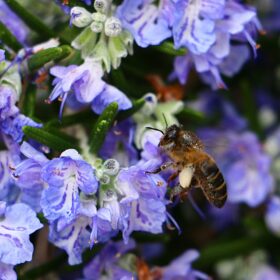
The plant tends to go into standby in the summer, due to its defense mechanisms against the heat. It is easy to find it flowering and fruiting in spring or autumn and even into winter if it is warm.
The roots are fibrous and resistant as well as anchoring so it can be used to hold small and medium-sized slopes in place.
It is also used in the preparation of liqueurs and for the production of excellent monofloral honey.
In pharmacology it is used against depressive states and to support the intellectual and physical vigor of those who need it (consult with a doctor to discuss these principles).
It is a symbol of love, loyalty and remembrance and many cultures place it on the grave as a sign of affection and respect for the deceased. The Egyptians instead placed it in the hands of the deceased because it was a symbol of the immortality of the soul and useful for facilitating the journey to the afterlife.
By the Greeks it was considered an aphrodisiac plant with magical properties linked to fertility and fidelity.
In the Middle Ages its stems were used to forge MAGIC combs that would prevent hair loss. It actually has the ability to stimulate hair follicles.
Even today in England it is believed that a twig, worn in the buttonhole of a dress, can bring good luck.
In the kitchen:
it is one of the most used aromatic plants in the kitchen to flavor meat, fish and vegetables.
THE MONDO DEL GIARDINO ADVICE
Due to the green tone of its dark foliage and the particularity of its leaves which give the bush a specific texture, this shrub is placed in flowerbeds in a background or end position with plants that can maximize the dark effect.
Now on horseback! Work awaits us! Our new wonderful outdoor space is about to be born!
GOOD WORK and…if you have any questions, write to info@ilmondodelgiardino.com
Sources of images: thanks to Pixabay and many thanks to Hans for the photo for the social media and cover and in order Sabrina Eickhoff, Igor Lukin, Lynn Greyling, Sandra Baer, Katharina N., K Wol, Luís Gonçalves and photosforyou for the photo closing.


